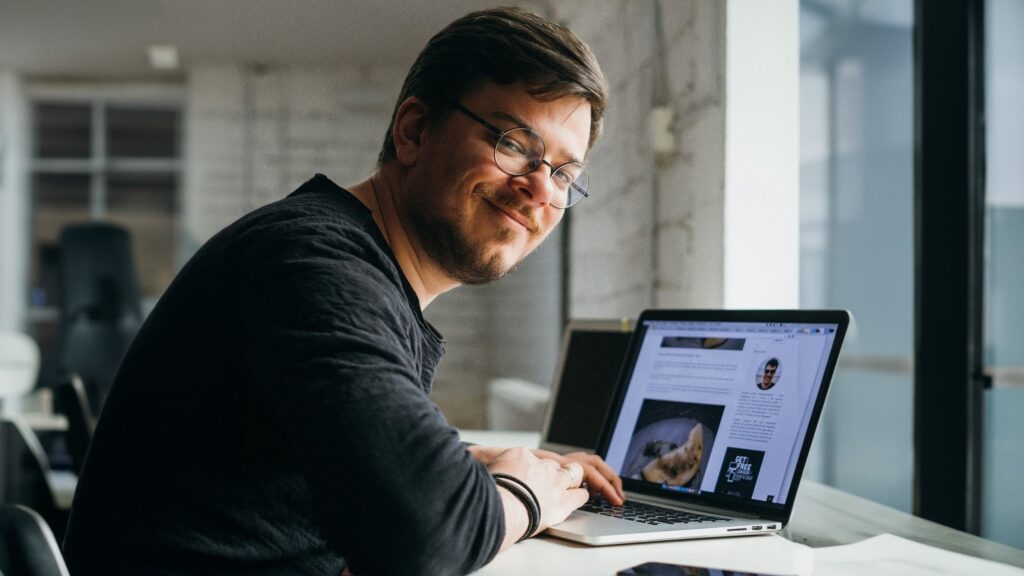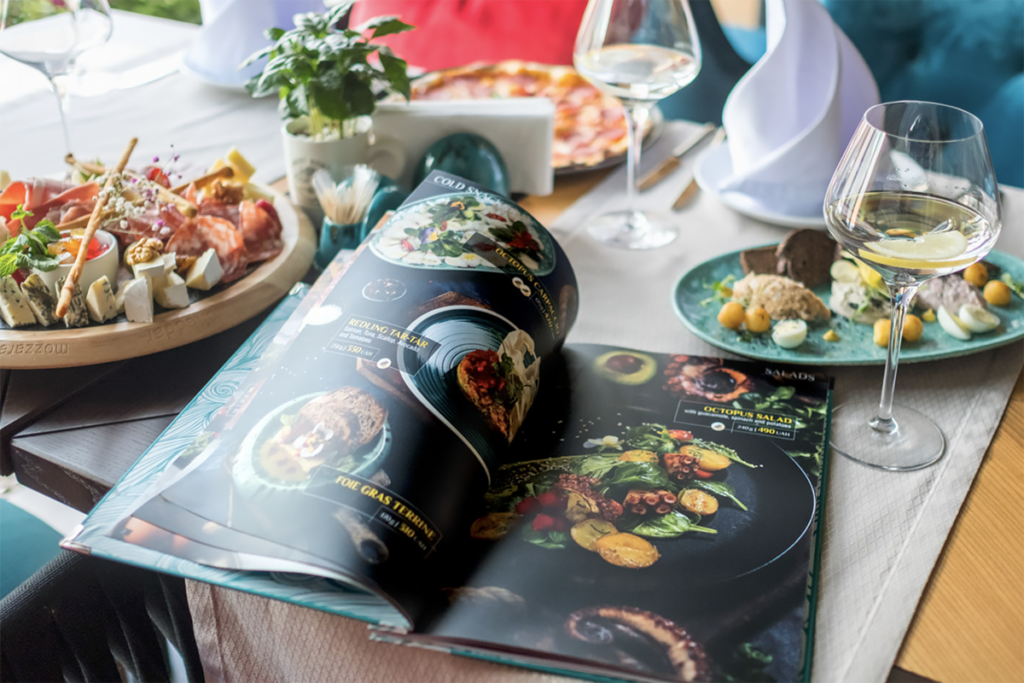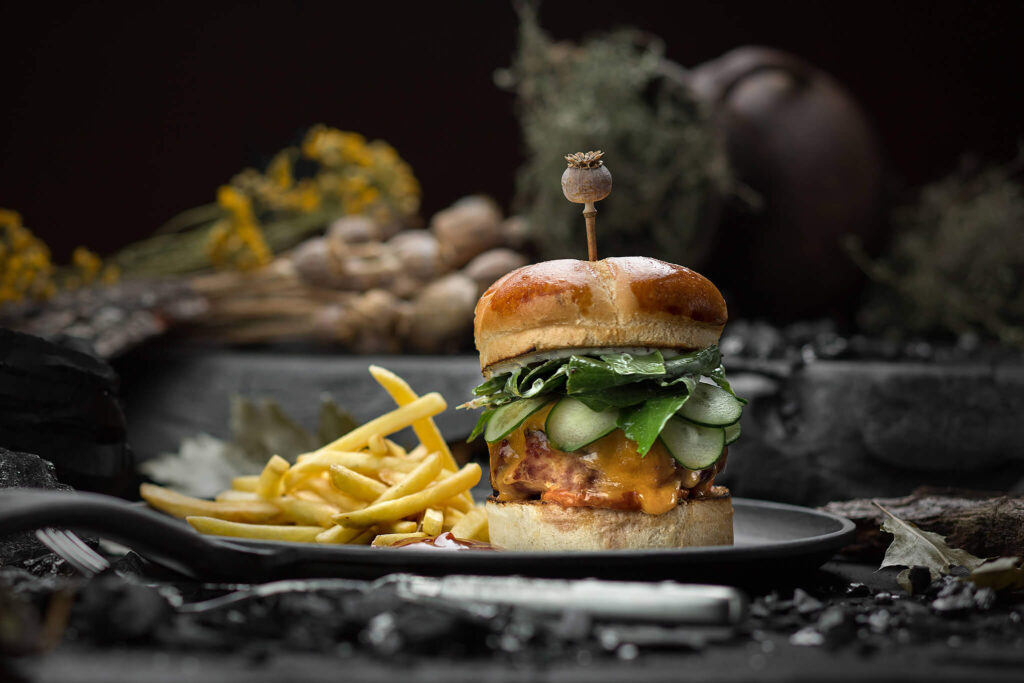About Alex Slyadnev
I have been thinking about what to write about myself for a long time. The best thing to do was to publish my hours-long conversation with an excellent Riga journalist, Elena Sheinina, which resulted in this short but succinct interview.
Alex Slyadnev
Behind every dish is a person’s fate. Behind every photo of a dish is an emotion. Alex Slyadnev, one of the first professional food photographers in Ukraine and one of the hundred best food photographers in the world, according to the British Journal of Photography, believes that if there is no emotion, the photo is boring! And how, on what, and by whom it was shot is not so important.
What is essential besides emotion? Alex tells about it for Lounge Riga magazine for those who like him:
1. likes to eat
2. likes to cook
3. likes to take pictures of food.
Find the right recipe.
When I started shooting, which was late 2011—early 2012, there were no food photographers in Ukraine. I.e., people who were involved in catering restaurants and creating visual concepts for them. There were none at all. I was one of the first, so I got to everything on my own, by trial and error.

Before that, I was an advertising photographer. I shot fashion and people, I had a big studio. (My friends laugh: I used to shoot human meat, and now I shoot food and chef’s meat).
But one day, I got an order from a restaurant. I shot it, and I didn’t like what I got—and I’m a perfectionist. So, I started digging and picking and hired a chef.
First food photos. 2011 - 2012
I bought an cheap electric stove (the studio was not adapted to cooking). For six months, the chief cook, and I spent six months shooting. The first photo I got was of ordinary buckwheat. And one of the first lessons — all cereals for a good photo should be slightly undercooked. Al dente. (Thinking about it, looking at the buckwheat photo: «Awful! Everything wants to be redone!»)
There were many such lessons. The only way out is to try and shoot!
Get the unicorn stuffing.
At first, only some of the time and all the money went into gaining experience. But I have no regrets—I love to eat. I eat a lot in different restaurants and other countries from various chefs. And I’m very spoiled.
I can’t eat anywhere, and I am always struggling with professional deformation: on the one hand, food is just a raw material not to starve to death; on the other hand, food is a pleasure. I like to cook myself; I often cook Italian or Pan-Asian dishes, often according to recipes given by chefs. I love BBQ and have even acted as a guest chef.
But I have not had time to try out everything. There are recipes that I call «unicorn stuffing» — because such ingredients are not available in my country, and it is almost impossible to get them.
In Hong Kong, I tried swallow’s nest with crab meat. My inner innovator didn’t get it: something floury, no bright flavor. Why it’s vaunted, I don’t understand. But crab meat with wax pumpkin (or winter melon) — delicious. But we can’t get this pumpkin here anyway!
Left: 2 Michelin-starred restaurants 欣圖軒 Yan Toh Heen (Hong Kong) and a Lobster and Swallow’s Nest dish in Egg White.
Right: 3 Michelin Starred Restaurant Tim’s Citchen (Hong Kong) and the dish «Crab with Waxed Pumpkin»
Yet the most important thing about a dish is not just the ingredients but also the nuances. I make Tiramisu according to a Michelin chef’s recipe. I had to drink with him for three days to learn the recipe. The secret was that it uses sabayon and, obligatorily, Buko cheese instead of the usual whipped eggs.
Left: Hideaki Sato, chef at Michelin restaurant Ryugin
Right: His molecular dessert, developed in collaboration with Yohji Yamamoto
Ouch, how many eggs were beaten until I got the correct result? I am lucky, by nature, to work only with the best — chefs and restaurants. In Asia, I worked with an exceptional chef, one of the top five Asian chefs. Pure molecular cuisine. That was a school!
Gradually, the knowledge was systematized, and I founded my photography school (slyadnev.info) and developed a series of master classes in photography.
Take the theory and add practice to it.
Learning is divided into two stages: theory and practice. You can only become a food photographer when you have practice. It takes 90 days to consolidate the theory you have learned subconsciously.
I take a promise from my students that they will definitely shoot daily for 90 days. After that, it’s up to them. I am not a zombie, but I have some psychological techniques.
The school for beginners lasts three months. In the last lesson, we analyzed everyone’s 10 best photos and picked out mistakes. From these photos, you can already understand whether a person shot every day during these three weeks or not.
Absolutely any picture bears the photographer’s imprint. Even the photographer’s height can be guessed from it—not by one, but by a series. You can guess the gender, too.
It can be challenging for creative people; they often say: I don’t know how I do it. However, commercial photographers must first understand and then do it, and only when they have accumulated some experience can they return to intuition and subconsciousness.
Some of my students say that after the course, there is a slight depression. There is only one way out — to shoot! Take pictures and watch!
Grow a genius in you.
Being a photographer is essential. Just as reading affects vocabulary, manner of speech, and literacy, vision affects the perception of colors and visual images. And this is precisely what you can develop in yourself.
In general, anyone can be engaged in art, including photography. Talent is a combination of factors—personal, social, and experience—and is an acquired quality. If a person has received an art education as a child, looked at paintings, or encountered a visual series, he or she has developed an in-depth knowledge. He or she just needs to learn composition, light, etc.
I have a second degree in psychology. It helps a lot in my work. For example, there are two states: rest and tension. You must make the photo easier to perceive — the light is on the left. This is a state of peace. If you want the image disturbed, it is on the right. And that’s it. Pure psychology!
I also graduated from art school. Second through ninth grade, every day except weekends. Although I had yet to gain any particular talent for drawing. I passed the exam only due to creativity, so I drew a stadium where many events occurred.
It turned out to be a picture with many details and plots. They took it as an idea. In the fourth year of study, I won the European competition for children’s expressionism in Austria. Since childhood, I have been fond of Kandinsky and Malevich.
I can’t draw again because I haven’t had any practice, but I think I can restore the skill with practice.
Add a pinch of associations.
The task of any food photographer is not to shoot a dish. It’s to make an association. To guess the expectation of the audience for which it’s intended. The classic example is the Olivier salad. This salad is utterly unattractive for shooting! Olivier is a celebration.
It’s eaten when you want a sense of celebration. And a food photographer has to convey that expectation. Sometimes, the chef and I argue. We even argue. He may not see the picture. Sometimes, we must «correct» and remake the dish several times. A typical shooting day — 20 dishes. This is the average. The minimum is 10 (in case of challenging shooting). The maximum I achieved was 106 dishes in one day, but it was sushi, and the background still needed to be changed.
Shooting grocery items is a separate topic. My record is 20.5 hours! We shot a spice packet. There is a big difference between menu photos and product image photos. You need to distinguish the two! You can’t take the same photos for a menu you would need for a website and social media.

The menu is a «contract» between the restaurant and the customer and a sales tool. By including good photos in the menu, the restaurateur reduces the time guests spend in his institution. People go to expensive restaurants to enjoy not only the food but also the atmosphere. Here, the waiter is the seller, and good photos are purely a matter of status. They don’t sell.
They explain, «This place is great!» In haute cuisine, the dishes are works of art, and the restaurant’s reputation depends on how they are served.
Sprinkle on eternity
Shooting styles can change for objective reasons (changing technology) and subjective ones, such as a change in the photographer’s mindset. Of course, there is such a thing as a trend.
For example, soft photography was in vogue in the 80s and early 90s. Special filters slightly blurred the photo. And the pictures became very smooth, moiré, hiding all the imperfections. The girls loved it. Today, these works seem terrible. The filter was killing life.

More recently, HDR photography has been in vogue. It’s the opposite of eye-gouging hyper-realism, and it also lacks an ounce of naturalness. Today, again, it looks silly and like yesterday because a new trend is relevant now—shooting from above, like Instagram.
But! Any trend is an opportunity to rise to the popularity wave and also quickly fall off it. A photographer should strive to take photos that will always be relevant. For example, Elliott Erwitt shot in the 1960s—70s, but his work is absolutely timeless. They’re still cool today.
And feel the difference!
Today, anyone with a camera is a photographer, even more so than anyone with a phone! And that’s a good thing. After all, it’s because of this accessibility and simplicity of the process that humanity’s vision and foresight are improving.
Now, everyone can see and understand what a true professional is. My goal is to create not just beautiful photos but also photos that sell. By the way, if you believe the figures provided by clients for whom I have already worked, my work helps to increase sales by about one-third:
First of all, I would like to point out that my task as a food photographer is not just to photograph the dishes provided in the restaurant but to do it within the framework of a developed concept, which will be understandable to the establishment’s guests and will increase sales in the restaurant.
The visual concept is an integral part of the overall brand strategy. It effectively packages the restaurant idea, reflects the format of the establishment, its advantages, and distinctive features, and conveys a unique atmosphere and mood.
The formula of a selling photo consists of many components:
Aiming at the target audience + call to action + emotion + "catchy" visual image + correct composition
And these are just the essential components.
The right visual concept supports the positioning of the restaurant and forms the client’s opinion of the institution. It increases the number of regular customers and increases the average check on average by 30%
According to the statistics of our customers:
63-78% - on average, by this much, a photo increases the sales of a dish in the restaurant
27-36% - this is how much the average check increases if photos of dishes are on the menu.
Alex, thank you so much for your work. If we compare the reports from our last shoot with the same period the previous year, the sales of the dishes we photographed increased. The percentage ratio is 70/30Natali Diordienko, Director of Top Cafe, Odessa
Hi Alex, I hope you're well. I took the statistics you requested after renovating our menu with your photos. Our bill has grown 24% at Namo and 31% at Gaylord.
Joanne Kwok is the marketing manager at Mayfair, Hong Kong.
You requested analytics about dishes with photos you took. Last month, we sold out 27% more than before. Thank you for a good job, Alex!
Pino Lavarra, Chef at Tosca, Hong Kong
How does a photo/video shoot happen?
Creating a selling visual concept that will showcase the food being served and increase the restaurant’s sales requires a series of creative and logistical activities on the part of both my photography team and you.
The challenge for my team is to create a visual concept that will blend in with your restaurant’s individual style, create a spin-off from the competition, and, most importantly, increase sales.